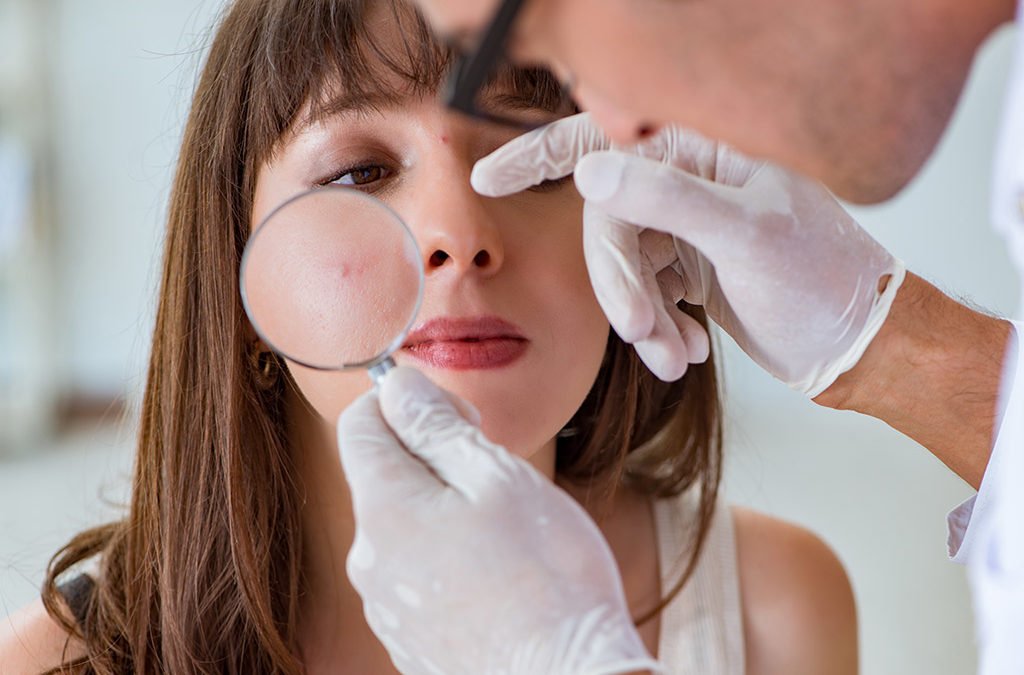Our skin is often a reflection of our general health and can be an indicator of changes among other, internal organs. Fortunately, most marks on the skin, blemishes, growths, and moles are harmless. Find out below what changes are normal and harmless, and when it’s time to see or reach out to a dermatologist.
The most common skin changes:
Stains
Most people have between 10 and 40 moles. Moles can appear up to your 40s. Moles can change over time. They can gradually increase, develop hair, become lighter in color, fade or fall out.
Warts
These are harmless growths that appear in the folds of skin on the neck, under the arms, under the breasts or in the groin. They start as small brown spots and can grow above the skin. Warts never turn into skin cancer.
Seborrheic keratosis
These growths on the skin are almost always harmless. They are most commonly found on the chest or back; occasionally on the scalp, face or neck; and less frequently below the waist. They start out as slightly raised spots that create a wart-like crust. It is usually painless and does not require treatment, but people often choose to remove it for aesthetic reasons.
The treatment for a skin change depends on what is causing the skin change and what other symptoms you are having. Moles, warts and other growths can be removed if they become irritated, bleed or cause discomfort. But how will you know when it’s time to help diagnose, treat, and manage a chronic skin condition?
WHEN TO SEEK THE HELP OF AN EXPERT?
In some cases, the skin may show signs of internal disease before the disease progresses and becomes more serious; in other cases, the symptom is visible on the skin long after the disease has already begun to cause internal damage. There are hundreds of skin indications that may indicate trouble, but very few general changes in the skin signal internal disease.
Dry, itchy skin or a rash that will not go away
Do you feel itching on your skin that just doesn’t stop. Were there days when nothing helped? These problems can have several causes, such as dry skin or reactions to medications. If your itching accompanied by a rash lasts for more than two weeks, it is time to visit a dermatologist.
Although a rash or dry skin can be harmless and go away after a few days or a month or two without any treatment, such as rash induced by jewelry allergy, finding the cause can help.
If the rash does not go away and you notice these symptoms, contact a dermatologist immediately:
A rash that covers the whole body – can be a sign of an allergic reaction or infection.
Along with the rash, fever also develops – if a fever with a rash appears, go to the emergency room immediately. It is a serious sign of either an infection or an allergic reaction.
A rash forms blisters or open sores – this is usually a sign of an allergic reaction, a bad reaction to medication or illness, or something going on in your body.
The rash becomes painful – a painful rash can have many causes, so a visit to a dermatologist is important for diagnosis.
Inflamed rash – The rash causes itching, which causes scratching, which can lead to infection. An infected rash can be painful, swollen, develop a crust, or discharge a yellow or green fluid.
These signs can be symptoms of much more serious conditions. You should talk to your doctor quickly to prevent the condition from getting worse.
Signs of infection
There are several types of skin infections, all with different signs and symptoms. A skin infection can be anything from athletic foot to leprosy. This variability is due to the fact that they can be caused by bacteria, fungi and viruses. Bacteria can cause the most serious skin infections. Infections caused by staphylococcus, impetigo, cellulitis or the previously mentioned leprosy. Two common symptoms of a bacterial skin infection are ulcers and pus or a discharge of fluid from the skin. Infections are also common when people try to remove their tattoos, that why we recommend to do non laser tattoo removal only by experts.
Fungal infections are very common skin conditions. If your skin is itchy, scaly, or dry, especially between your toes, you probably have a minor fungal infection.
As for viral skin infections, there is a chance that you have had at least one at some point in your life. If, for example, you had chickenpox, you had a viral skin infection. Measles and herpes are also viral infections, along with many warts.
Persistent acne
It is not only young people who are fighting unbearable acne! Members of any age can get. For many, over-the-counter medications are sufficient, but this is not always the case. If you have seemingly tried everything, but without success, a visit to a dermatologist should be your next step.
Irregular mole that changes shape or size
And finally, the most important one! Although most moles are harmless, some are indicators of skin cancer. Knowledge of these indicators is crucial for early diagnosis. So what makes a mole a reason to visit a dermatologist? There are a few key signs that can tell you if you need a mole checkup:
- the mole is irregularly shaped
- the mole has an irregular and jagged edge
- the growth has more colors or the color is unevenly distributed
- the mole is larger than 6 mm
- changes that may occur after some time, such as a mole that grows or changes color and shape over time, and new signs and symptoms such as itching and bleeding may appear on the mole after some time.
It is important to note that, even if you have most of these signs, do not diagnose yourself. If your family history includes cases of skin cancer or other skin conditions, regular visits to a dermatologist are necessary.

